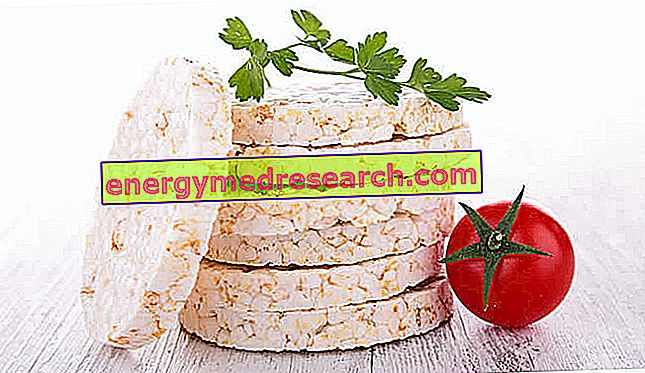Introduction
Frying is a cooking method based on immersing foods in boiling fat; the result is a particularly appetizing and caloric dish, which must be consumed sparingly in order not to endanger the optimal functionality of our body. In order for the food to be fried to satisfy the palate without overloading the digestive system, it is necessary to observe some simple rules of preparation.
Oil and fryingOils for fryingAt what temperature to fry Tips for fryingCutting and health
Oil and frying
The choice of oil should fall on the olive oil (especially suitable for fish) or on the less expensive peanut oil. Both, in fact, contain a large amount of monounsaturated fatty acids, which better withstand the high temperatures reached during frying. In contrast, polyunsaturated fatty acids - typical of fish oil, sunflower oil, corn oil and grape seed oil - degrade easily with heat, creating substances that are harmful to the body.
To assess the suitability of a fat for frying there is an index, known as a smoke point ( smoke point ), which expresses the maximum tolerable temperature of oil or fat; exceeding this threshold determines the decomposition of the product and the genesis of the aforementioned harmful substances; consequently, the ideal oils for frying are those with a high smoke point.
| Smoke point of some oils and fats * | |
| Sunflower oil | less than 130 ° C |
| Soybean oil | 130 ° C |
| Corn oil | 160 ° C |
| Peanut oil | 180 ° C |
| Extra virgin olive oil | 210 ° C |
| Coconut oil | 177 ° C |
| Refined palm oil ** | 240 ° C |
(*) the proposed values may vary according to the degree of refining, the variety of seeds, seasonal trends and cultivation techniques; for this reason different data can be found in the literature. The smoke point decreases - even noticeably - if the oil is not properly stored (remember that it is necessary to repair it from light and heat) and if it has already been used in the previous frying. (**) refined oils have a higher smoke point than non-refined ones and are therefore more suitable for frying foods. | |
On the market there are also mixtures of specific oils for frying, characterized by a particularly high smoke point.
What temperature?
Based on what was said in the previous paragraph, you might think that healthy frying is obtained by cooking on a slow fire; in reality a temperature that is too low is not recommended, because it leads the food to absorb considerable quantities of oil and to expire from a healthy and organoleptic point of view.
It should be noted that the temperature of the oil decreases excessively even when frying doses of food that are too high in one go, with the result that the various dishes tend to soak in oil and stick together. On the other hand, an excessive temperature - in addition to being harmful to the overcoming of the smoke point - causes the food to burn too quickly remaining raw inside.
| Oil temperature | Food suitable for frying |
| 150 ° C | Vegetables, potatoes, large fish, crescentine, yeast cakes |
| 160-170 ° C | Flour preparations, breaded or passed to various batters (cutlet, breaded vegetables, etc.) |
| 180 ° C | Small floured fish |
Fry without Oil
It would seem a utopia, but it is one of the many magic of molecular cuisine. Even with its limitations, frying in glucose is a valid and healthy alternative to the classic oil frying; in the video, our personalcooker illustrates all the secrets of this technique.
Frying Without Oil - How to Fry Without Fat
X Problems with video playback? Reload from YouTube Go to Video Page Go to Video Recipes Section Watch the video on youtubeTips for frying »



